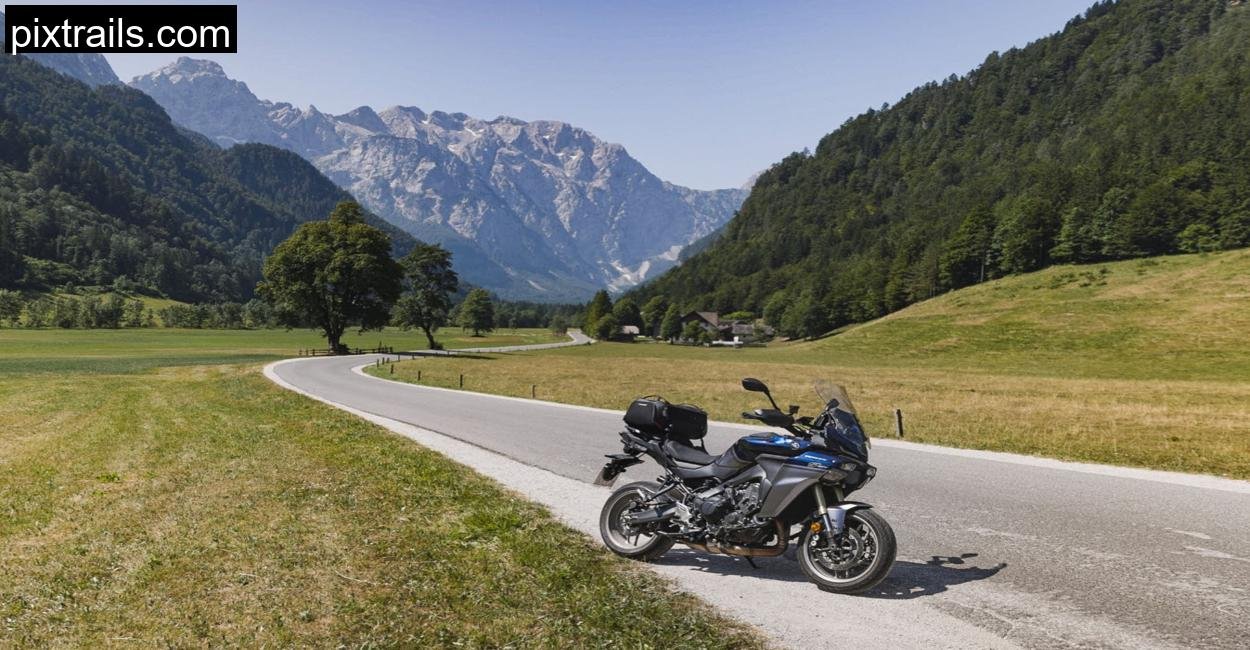I have always believed that Piedmont has a way of making any vehicle feel more alive. The rolling vineyards, the medieval hilltop towns, the winding cobbled streets in places like Alba and Asti, they aren’t just picturesque; they are a challenge for man and machine. So when Honda invited me to test their all-new CUV e:, an electric scooter that they say could redefine the urban commute, I knew exactly where I wanted to put it through its paces. Not in a closed circuit, not on a laboratory dyno, but out here, in the heart of Italy’s most scenic and surprisingly demanding region.
Piedmont, with its mix of tight village lanes, sloping country roads, and the occasional fast highway stretch, is an unforgiving judge of a scooter’s real-world worth. And this was no ordinary test, the Honda CUV e: is a brand-new 2025 model that has its roots tracing back nearly three decades to the original CUV ES of 1994. Back then, it was Japan-only. Now, Honda wants to take it global, and Piedmont was my proving ground.
Design, Build, and First Impressions
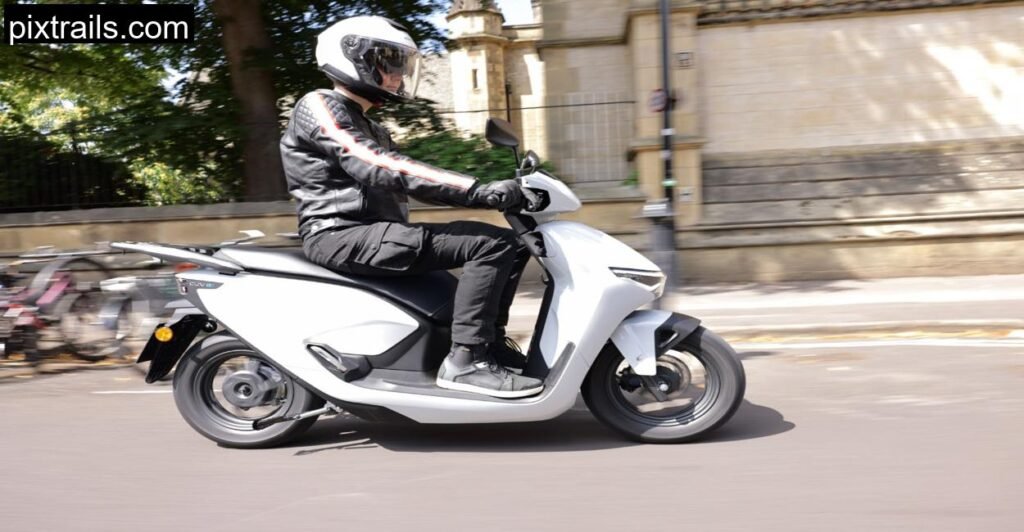
The first thing you notice about the Honda CUV e: is how unapologetically modern it looks, yet there’s a certain restraint in the design language. Honda hasn’t gone for wild sci-fi lines or over-aggressive edges. Instead, the CUV e: has a smooth, compact silhouette with subtle curves and clean panel joints, available in three factory colours. In the warm Italian afternoon light, my test unit, finished in a pearl white tone, stood out elegantly against the green vineyard backdrop.
What grabs your attention next is the single-sided swingarm design. It’s not just engineering for the sake of engineering; it keeps the rear visually open and also houses the side-mounted E-Drive motor neatly within the aluminum die-cast body. The lack of visible clutter makes it a scooter that’s equally at home parked in front of a trendy Turin café as it is in a rural courtyard.
Under the seat is where the CUV e: shows its unique approach. There’s no under-seat helmet space because the slot is occupied by not one, but two removable Honda Mobile Power Pack e: lithium-ion batteries. Each weighs around 10.2 kg and can be removed for charging indoors or swapped at compatible exchange stations. Here in Italy, such swap stations are still rare, but the design hints at Honda’s ambition for a future where these packs become an industry standard.
Technical Specifications – Honda CUV e: 2025
The specifications listed are officially published by the Honda’s and sourced from their website. We ensure accuracy by relying on the latest manufacturer data.
| Specification | Detail |
| Motor | Side-mounted E-Drive motor integrated into single-sided swing arm |
| Peak Power | 6 kW (8.16 hp) in Sport Mode |
| Continuous Power | 4.2 kW |
| Max Torque | 22 Nm |
| Batteries | 2 × Honda Mobile Power Pack e:, 50.3 V, 1.3 kWh each, removable |
| Battery Weight | 10.2 kg each |
| Range | 70+ km (WMTC standard) |
| Top Speed | 83 km/h (tested 94 km/h speedo reading) |
| Charging Time | 0–100% in 6 hours, 25–75% in ~160 minutes |
| Water/Dust Protection | IP65 |
| Frame | Steel lower beam frame |
| Front Suspension | 26 mm telescopic fork, 90 mm travel |
| Rear Suspension | Single shock, 75 mm travel |
| Brakes | Front: 190 mm disc (single-piston Nissin caliper), Rear: 130 mm drum, CBS |
| Wheels/Tyres | 12-inch alloy, 100/90-12 front, 110/90-12 rear |
| Seat Height | 760 mm |
| Wheelbase | 1,310 mm |
| Ground Clearance | 145 mm |
| Kerb Weight | 120 kg (with both batteries) |
| Max Load | 177 kg |
| Display | 7-inch TFT (full connectivity, navigation, OTA updates) |
| Driving Modes | Standard, Sport, Econ + Reverse Assist |
Riding Through Piedmont – Real-World Performance
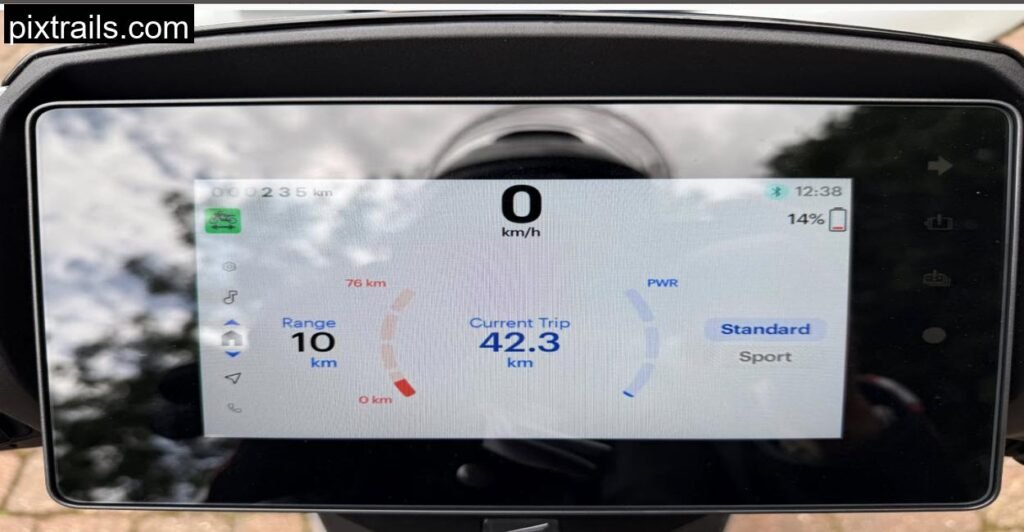
From the first twist of the throttle in Alba’s narrow lanes, it became clear that Honda had nailed the smoothness of the CUV e:’s motor control. There’s a silky yet immediate torque delivery, especially in Sport mode, that makes darting through traffic effortless. In Standard mode, it feels like a well-tuned 110cc petrol scooter, but without the noise or vibration. Econ mode exists, but here in Piedmont, where some roads are steep and traffic can be unpredictable, I found it frustratingly sluggish.
Sport mode, however, was a joy on the uphill hairpins leading out towards La Morra. That 22 Nm of torque, available almost instantly, gave the CUV e: a sense of urgency that belied its modest top speed. Still, Sport mode comes with a catch, drain the battery below 30% and it’s locked out, leaving you with Standard mode only.
The handling is another story. In the narrow cobbled streets of Barolo, the short wheelbase and low weight made the scooter feel incredibly flickable. But the suspension tuning didn’t love the reality of old Italian stonework. The 26 mm fork and single rear shock absorbed small bumps well enough, but sharp-edged imperfections hit hard. I felt it most when crossing the uneven stone bridges; the jolts traveled straight up my spine. With better damping calibration, the ride could match the motor’s refinement.
Braking, with Honda’s CBS setup, was predictable and well-balanced in dry conditions. However, on a damp section outside Bra, I found myself wishing for ABS, especially on the small 12-inch wheels. CBS works well for everyday commuting, but on slippery cobbles, ABS would be a reassuring safety net.
Living With It – Storage, Comfort, and Practicality
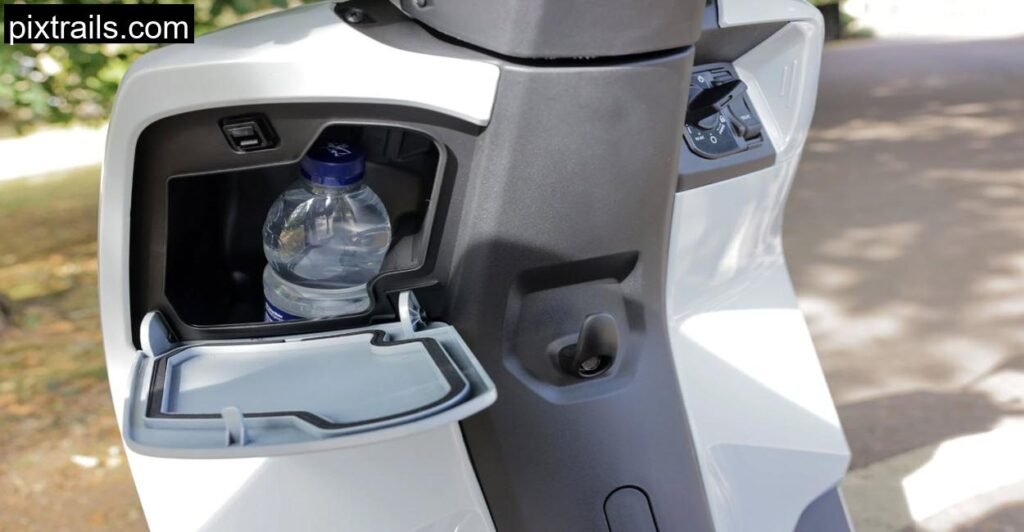
The biggest compromise with the Honda CUV e: is storage. With the batteries under the seat, there’s no helmet space, forcing you to opt for an optional 35 or 45-liter top case. For a scooter marketed as urban transport, that’s a must-have. There’s a small glovebox on the front left, enough for a water bottle and maybe your phone, and it includes a USB-C port for charging.
Footboard space is another limitation. Wearing my size 44 riding shoes, my toes were uncomfortably close to the front fairing. I can see taller riders feeling cramped, especially on longer rides.
Wind protection is minimal, as expected on a scooter this size. On the faster open roads between Asti and Turin, I felt the wind pressing at my chest, but Honda does offer an optional windscreen. For my height (178 cm), it would be a worthwhile addition.
Passenger comfort is reasonable for short trips. The fold-out pegs are easy to deploy, and the flat seat means a pillion doesn’t feel perched awkwardly. Still, with a max load of 177 kg, two larger adults will notice the scooter working harder on hills.
Range and Charging – The Everyday Reality
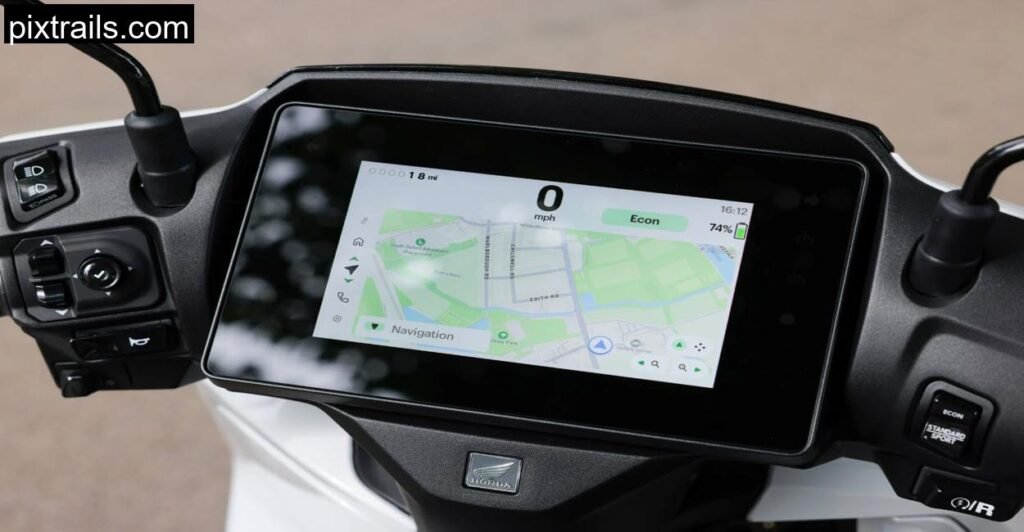
In my two days of riding around Piedmont, I averaged about 50–55 km per charge with mixed riding, some city stop-and-go, some hilly countryside, and some short highway bursts. Honda claims over 70 km in WMTC testing, and that seems achievable if you stick to Standard mode and avoid extended high-speed runs.
Charging at a wall socket took me just under six hours from empty. On my second day, I topped up from about 30% to 80% in roughly two hours while having lunch in Turin. The removable batteries were easy to carry into the café, though at 10.2 kg each, you wouldn’t want to lug them far every day.
Battery swapping is the big promise here. If Honda can set up a network of swap stations across Europe like they’re piloting in Asia, range anxiety would virtually disappear. Imagine riding into a station, swapping two empty packs for full ones in under a minute, and heading off, that’s a future worth aiming for.
Conclusion – A Step in the Right Direction with Room to Grow
The Honda CUV e: feels like a scooter built for a changing world. It’s quiet, clean, and agile enough for the busiest city streets, yet capable of handling the occasional countryside detour. In Piedmont, it showed that it could climb, corner, and cruise, but also that it still has some room for refinement.
The motor and battery system are excellent. The TFT display and connectivity features are best-in-class. But the suspension needs more polish, ABS should be standard, and storage needs to be addressed, ideally with a top case included in the base price.
In the right environment, the CUV e: makes perfect sense. For short to medium commutes, especially in emission-restricted zones, it’s a joy to ride. Whether it becomes a true game-changer will depend on how quickly Honda can expand the charging and battery-swap infrastructure.
What is the real-world range of the Honda CUV e:?
In my Piedmont test, I got about 50–55 km per charge with mixed riding. Honda claims 70+ km under WMTC standards.
Can the Honda CUV e batteries be swapped?
Yes, they are fully removable and designed for swapping, but the infrastructure in Europe is still limited.
Does Honda CUV e have ABS?
No, it uses a CBS braking system. ABS is not available, which is a downside for safety.

